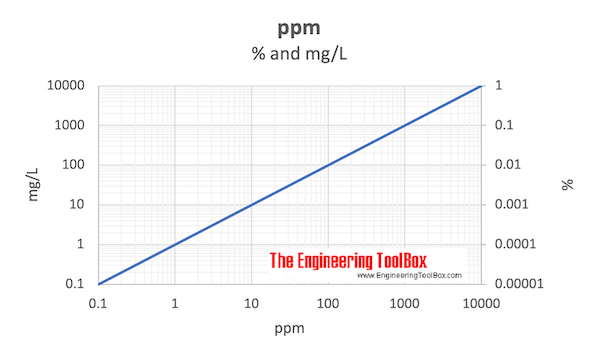

Your mean values are going to drift away from the ideal.Ī sample size of 4 is capable of detecting a minimum shift in the mean of 1.5 sigma. In particular, he recommended taking sample sizes of 4, because it simplified calculations and personal computers were a long way off.Īs we all know, in the real world, processes don’t run according to plan forever. This reduces sampling costs, for obvious reasons.

HOW TO CALCULATE PPM USING GLASS STANDARD SERIES
When Walter Shewhart developed his model for statistical quality control in the 1920s, he recommended using a series of small samples, rather than a single large sample. The 1.5 sigma shift has it’s origins in the world of control charts. However, there is an origin story behind the shift, and if you understand why it exists, there is a method to the madness. Now, if that sounds arbitrary, it sort of is (some even call it an abomination). Instead, they implement a 1.5 sigma shift. The Six Sigma method doesn’t use a straightforward measure of sigma. Okay, here’s where things get just a little bit more tricky (or as statistician Donald J. (The negative sign in the formula counteracts the fact that we’re dealing with the left tail of the distribution.) Conversion Between PPM and Sigma With the 1.5 Sigma Shift (As In, The Six Sigma Fanboys Can Pay Attention Now) So 233 PPM corresponds to about 3.5 sigma. Now, we input this probability into the inverse standard normal distribution and find our z-value (sigma), like so: So we divide by a million and get 0.000233. First, we need to get this from PPM to a probability. (No, 2.5 sigma isn’t very good.) From PPM to SigmaĪlright, let’s say we wanted to go from 233 PPM to sigma. So, 0.006210 is a probability. To get this into PPM, we would multiply by a million. We could certainly work with that it’s just not as convenient. If we entered =NORMSDIST(2.5), we would get 1-0.006210 as our answer. That means they start from the left and work their way forward. Excel and most other calculators use the cumulative normal distribution to calculate values. If you’re wondering about that negative sign, let me explain. (I’m giving away the secrets of my spreadsheet here.) In Excel, you could find this using the formula =NORMSDIST(-2.5). (I will never share your email address with anybody.) Or you can go ahead and read on to understand how this conversion works, and set it up yourself. To get the calculator, and to sign up for more updates like this one, go ahead and sign up using the form below. You can use the calculator to convert between PPM and sigma in both traditional Statistical Process Control and Six Sigma (and yes, the results are different). I went ahead and put together a “calculator” for you to accomplish this (okay, it’s an Excel spreadsheet). It should go without saying that being able to convert back and forth between PPM and sigma can be very handy.

The terminology DPMO (defects per million opportunities) is also sometimes used in place of PPM, but it means essentially the same thing. (More on that later, considering that it technically corresponds to 4.5 sigma.)ĭefects are often measured in PPM (parts per million), but statistical processes are usually understood in terms of standard deviations (sigma). Probably the most widely known example is Six Sigma, which aims to keep the number of defects below 3.4 per million. One of the primary goals of statistical process control is to reduce the probability of a “defect,” however you define it, to acceptable levels.


 0 kommentar(er)
0 kommentar(er)
